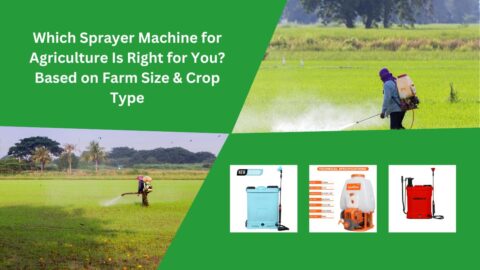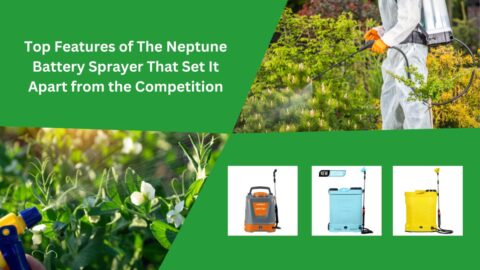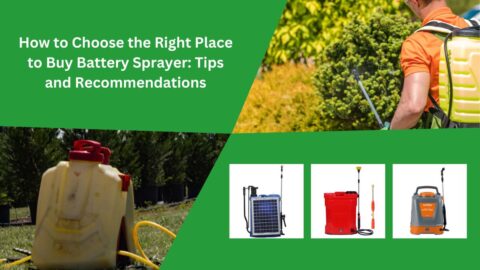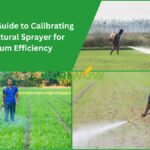Investing in a new spraying machine for agriculture is a significant step toward efficient and effective crop management. Whether you’re a seasoned farmer or just starting, understanding how to use and maintain your sprayer machine for agriculture properly is crucial for maximizing its lifespan and optimizing your yields. This comprehensive guide will walk you through the essential steps, from initial setup to long-term maintenance.
1. Understanding Your Spraying Machine
Before you even think about filling the tank, familiarize yourself with your machine.
- Read the Manual: This is the most important step. The manufacturer’s manual provides detailed instructions on your specific model, including its features, operating procedures, and safety precautions.
- Identify Key Components: Understand the functions of each part, including the pump, tank, nozzles, filters, pressure gauge, and control valves.
- Determine Your Needs: Consider the type of crops you’re growing, the size of your fields, and the types of pesticides or fertilizers you’ll use. This will help you choose the right nozzles and settings.
2. Initial Setup and Calibration
Proper setup and calibration are essential for accurate application and preventing waste.
- Assemble Correctly: Follow the manual’s instructions for assembling the machine for agriculture, ensuring all connections are tight and secure.
- Check for Leaks: Fill the tank with clean water and run the sprayer machine for agriculture to check for any leaks in the hoses, connections, or tank.
- Calibrate the Sprayer: Calibration ensures that you’re applying the correct amount of solution per acre. This involves measuring the output of the nozzles at a specific pressure and speed.
- Nozzle Selection: Choose nozzles that provide the desired spray pattern and flow rate. Different nozzles are designed for various applications, such as broadcast spraying, band spraying, or spot spraying.
- Pressure Adjustment: Adjust the pressure to achieve the desired spray pattern and droplet size. Higher pressure produces finer droplets, which can be beneficial for certain applications but can also lead to drift.
- Speed Control: Maintain a consistent speed while spraying to ensure uniform application.
- Measure Output: Use a calibrated container to measure the amount of solution sprayed per minute from each nozzle. Calculate the application rate based on your speed and the spacing between nozzles.
3. Safe Operation and Application
Safety should always be your top priority when operating a spraying machine for agriculture.
- Wear Protective Gear: Always wear appropriate personal protective equipment (PPE), including gloves, goggles, a respirator, and protective clothing.
- Mix Chemicals Correctly: Follow the instructions on the pesticide or fertilizer label for mixing and application.
- Spray in Favorable Conditions: Avoid spraying in windy conditions to prevent drift. Spray during the cooler parts of the day to minimize evaporation.
- Maintain Consistent Speed and Pressure: This ensures uniform application and prevents over- or under-application.
- Avoid Overlapping: Overlapping spray patterns can lead to excessive application and crop damage.
- Clean the Sprayer After Each Use: This prevents chemical buildup and corrosion.
4. Routine Maintenance and Care
Regular maintenance is essential for extending the lifespan of your machine and ensuring optimal performance.
- Clean the Tank and Nozzles: Thoroughly clean the tank and nozzles after each use to remove any chemical residue. Use a dedicated sprayer cleaner or a mild detergent.
- Check Filters: Clean or replace filters regularly to prevent clogging.
- Inspect Hoses and Connections: Check for cracks, leaks, or damage to hoses and connections.
- Lubricate Moving Parts: Lubricate moving parts, such as the pump and control valves, according to the manufacturer’s recommendations.
- Store Properly: Store the battery sprayer for agriculture in a clean, dry place when not in use. Drain the tank and hoses to prevent freezing during cold weather.
- Winterization: If you live in a region with freezing temperatures, take extra precautions to winterize your neptune battery sprayer. This may involve draining the pump and adding antifreeze.
- Regular Inspections: Conduct regular inspections of your sprayer machine for agriculture to identify any potential problems early on.
- Pump Maintenance: Pumps are crucial. Follow the manufacturer’s instructions for maintaining the pump. Check oil levels if applicable and inspect for leaks.
5. Troubleshooting Common Issues
Even with proper care, you may encounter some common issues.
- Clogged Nozzles: Clean or replace clogged nozzles.
- Low Pressure: Check for leaks, clogged filters, or a faulty pump.
- Uneven Spray Pattern: Check for clogged nozzles, damaged nozzles, or incorrect pressure.
- Pump Failure: Check for leaks, low oil levels, or a faulty motor.
- Leaks: Tighten all connections and replace any damaged hoses or seals.
By following these guidelines, you can ensure that your new spraying machine for agriculture operates efficiently and effectively, helping you achieve optimal crop yields and protect your investment. Always prioritize safety and consult the manufacturer’s manual for specific instructions on your model.
FAQ
Q1. What are the uses of spray machines in agriculture?
A sprayer helps kill pests and reduce the risk of disease in plants. Sprayers are used to control pests and plant diseases by spraying pesticides, herbicides, or other pest medicine. This can help farmers improve production yields and accelerate the process of plant treatment to be more efficient.
Q2. What are the main functions of a sprayer?
A sprayer is a device used to spray a liquid, where sprayers are commonly used for the projection of water, weed killers, crop performance materials, pest maintenance chemicals, as well as manufacturing and production line ingredients.










